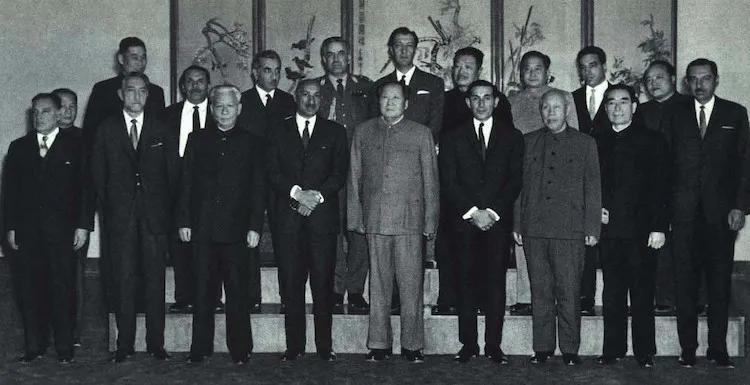Viewpoint by BM Jain
The writer is a Professor of Political Science and the Editor-in-Chief of the Indian Journal of Asian Affairs.
NEW DELHI (IDN) — China is determined to establish a geostrategic foothold in the new Taliban-led Afghanistan. A decade ago, China forayed into Afghanistan’s strategic space by inking deals with the Afghan government in the mining, power and oilfields sectors—although Afghanistan’s chaotic political environment prevented any real progress. China then played a key role in facilitating peace talks with the Taliban from 2014. With the Taliban back in power, China can once again advance its interests.
The new Taliban regime has termed China its ‘most important partner’ and a ‘dependable friend’ for aid, investments and infrastructure projects. These depictions are significant because the Taliban does not expect to receive foreign aid from other sources, such as the World Bank or the IMF, to stave off an economic catastrophe. Part of what attracts the Taliban to China is its massive financial resources, evidenced by its US$1 trillion investment in its Belt and Road Initiative (BRI).
More importantly, the Taliban is being treated as a pariah by the international community at large. As such, it looks to China as a pillar of financial and diplomatic support at the United Nations. Notably, Chinese Foreign Minister Wang Yi’s address to the 2021 G20 foreign ministers’ meeting called for the lifting of unilateral sanctions against Afghanistan.
What drives China to solidify its ties with the Taliban government? Geopolitically, China is in a much better position today to play the role of a game-changer, with the decline of US power and its chaotic exit from Afghanistan. China is now emboldened to fill the power vacuum to serve its myriad strategic interests.
Beijing’s fundamental concern is about radicalisation spilling over into China. It is seriously engaged in negotiating with the interim Taliban government for a blanket guarantee that it will not export extremist forces to support Uyghur separatists in Xinjiang. Regardless of the magnitude of the threat, Beijing’s main concern is adopting all possible preventive measures to ensure internal security and stability.
China’s eyes are also cast on Afghanistan’s rare-earth metals, which are estimated at between US$1–3 trillion in value. These metals are used in rechargeable batteries for electric cars, computers, televisions, fibre optics and lasers. China’s direct investment in Afghanistan has spiked by nearly 12 per cent in 2020, apart from its investments in Afghanistan’s Mes Aynak copper mine project in 2008 and the Amu Darya oil exploration in 2011.
China also needs the Taliban’s full support for the successful completion of its BRI — and the Taliban is rolling out the red carpet. Taliban spokesperson Zabiullah Mujahid reportedly clarified that his government is willing to join the BRI’s China–Pakistan Economic Corridor.
Another Chinese objective is to scupper even the minimal strategic presence of India under the new government. To this end China is engaging Pakistan, which has no qualms about joining hands with its ‘all-weather friend’.
Overall, China seeks to play a proactive role diplomatically and politically to help bring stability and peaceful conditions to Afghanistan. This would help it advance its projects and play an influential role in articulating and contouring governance structures in Afghanistan.
The question is, how?
China will employ mixed tools of diplomacy characterised by patience, caution and long-term strategic planning to exercise its leverage. Still, no definite timeline for this can be predicted in the complex web of international politics.
So far as India’s role in a new Afghanistan is concerned, its strategic gurus appear to be clueless. There is no blueprint or integrated roadmap to deal with the China–Pakistan challenge to India’s strategic investments in Afghanistan. India is now sidelined on the emerging future of Afghanistan, affecting its free access to Central Asia through the Afghan corridor and obstructing its operations in Iran’s Chabahar port adjacent to the Afghan border. While India was not invited to the 2016 multiparty talks hosted by Moscow, China emerged as a key player to reshape Afghanistan’s future course.
Other stakeholders, including Iran and Russia, are equally interested in playing a role in determining Afghanistan’s strategic landscape. China will need to play its cards with caution and restraint to manage and sustain its friendly ties with both Moscow and Tehran without undermining its key interests.
It is in China’s fundamental interest to have a stable and peaceful Afghanistan. It does not want to see the ‘graveyard of empires’ again — it will be a litmus test for China to reverse this history in Afghanistan. A safe and peaceful Afghanistan will enable China to extend the China–Pakistan Economic Corridor project, integrating the country with the flagship BRI project to serve its mercantile and strategic interests.
But it will not be an easy task for China to carry out its projects smoothly given the internal security risks emanating from the so-called Islamic State Khorasan Province, although the Taliban has reiterated its firm commitment to uproot its tentacles in the country. China will need to proceed with its projects with much caution to advance its various interests in Afghanistan. [IDN-InDepthNews – 10 October 2021]
Note: This article first appeared on the website of EastAsiaForum on October 8.
Photo: King Mohammed Zahir Shah and the visiting Afghan delegation with Mao Zedong, Liu Shaoqi, Zhou Enlai and the Chinese leadership in Beijing on November 1, 1964. Wikimedia Commons.


